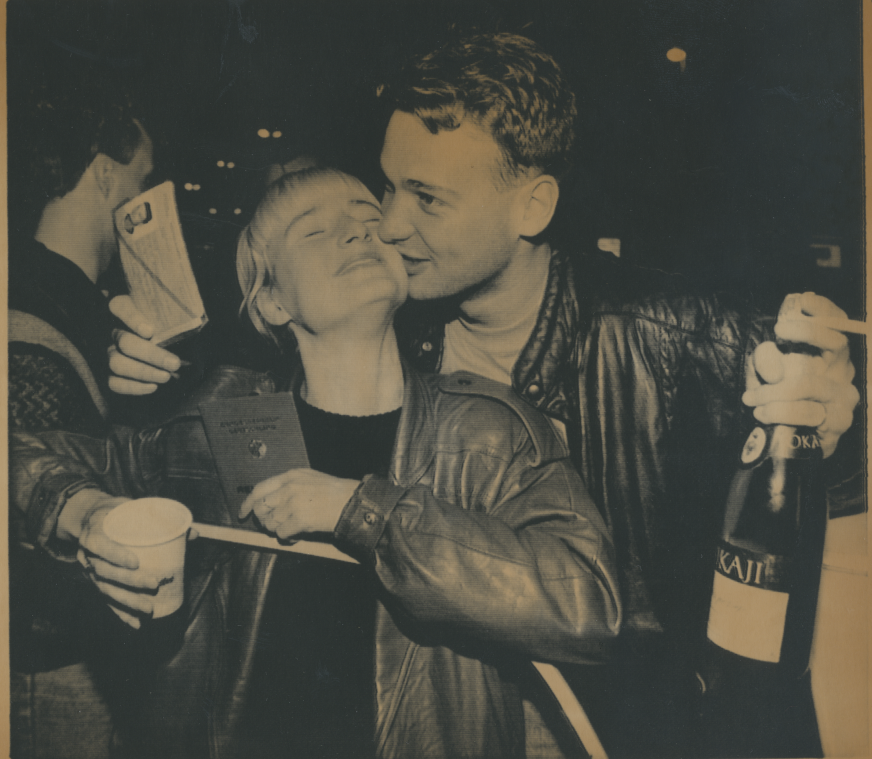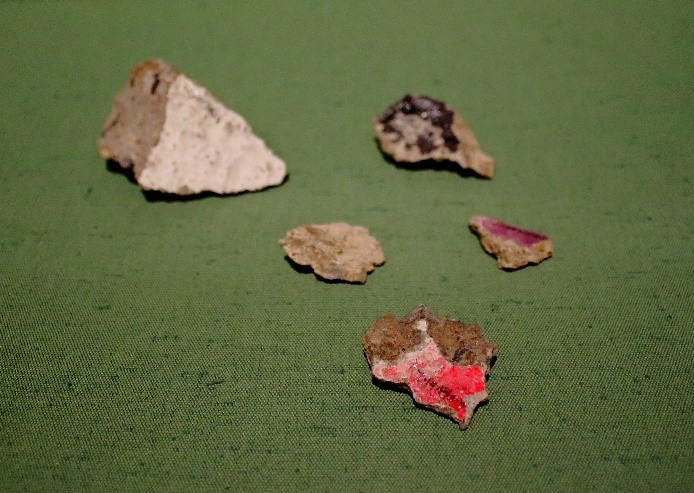This week marks the 30th anniversary of the destruction of the Berlin Wall. And three decades after the its fall, we are displaying pieces of the wall that we have in our collection. People’s History Museum’s Collections Officer, Sam Jenkins tells us about the history of the barbed wire topped wall that took away basic human rights.
A physical barrier, made up of concrete blocks and perimeter fences, that surrounded the city of West Berlin from 1961 until 1990. At 12 feet tall and four feet wide, the wall and its surrounding security systems were known as the death strip; filled with tripwire machine guns, trenches and dogs, and guarded by soldiers in watchtowers.
After World War II, Germany had been split between the Federal Republic of Germany (FDG) in the west, and the German Democratic Republic (GDR) in the east. The GDR was allied with the Soviet Bloc, and was a satellite state of the Union of Soviet Socialist Republics (USSR), while the FDG was an independent state allied with the Western Bloc and the North Atlantic Treaty Organisation (NATO). Berlin had also been split between these powers, despite being in the eastern zone. West Berlin became a pocket of western ideology in the Soviet east.
The west of Berlin, under capitalism, had become a vibrant and wealthy city, and attracted a lot of young well educated people from East Germany. The GDR built the wall to try and stop this ‘brain drain’.
The wall was originally made of wire fence and concrete blocks but was strengthened several times while it stood, with the fourth and final version being completed in 1975.
A year after it was first built a second fence was built parallel to the wall on the east side; all buildings and vegetation between the two was destroyed, creating the death strip. This strip of land offered no cover and clear fields of sight for the wall guards, who were ordered to shoot on sight anyone attempting to cross the wall illegally. To the west, however, the wall backed straight onto the streets.
It was very difficult and dangerous to cross from East to West Berlin after the wall was built, but many people still tried; between the building and the fall of the wall, around 5,000 people managed to defect. Many used tunnels to avoid detection, but others tried to scale the wall or drive vehicles through checkpoints.
The wall guards were given permission to shoot at defectors attempting the crossing, and over 100 people died trying to get to the west.
People in the west protested against the wall when it was first erected, and acts of protest continued until it was dismantled. From 1975 West Berliners famously painted street art and graffiti onto the west side of the wall, in a continuing creative act of protest.
Musician David Bowie and actor David Hasselhoff played concerts for people on both sides of the wall, which can be seen as a protest against the division the wall created, and musician Bruce Springsteen, playing a concert in East Berlin in 1988, spoke directly of being against the wall’s existence.
East Berliners also protested against the wall, especially in the months leading up to it falling, and the restrictions placed on their movement. In 1989 the Peaceful Revolution began with weekly demonstrations in towns and cities throughout East Germany calling for democracy.
There are a lot of factors that led to the fall of the Berlin Wall. The weakening of the Soviet States in the late 1980s started to change the outlook of the country. The reopening of borders between Eastern and Western Bloc countries, including between Hungary and Austria, allowed more routes for defectors, and the GDR’s efforts to stop this led to large scale demonstrations across East Germany.
The GDR’s borders with Hungary and Czechoslovakia, which had been closed after an influx of East German refugees, were reopened in November 1989. However, the large number of refugees put a huge strain on relations between the two countries and the GDR. The East German government soon decided that emigration would be allowed through all border crossings, including across the Berlin Wall. The change was announced in a press conference on 9 November 1989, though the intended start date of 10 November had not been communicated to the official spokesperson giving the conference.
Thousands of people soon arrived at the wall demanding to be let through. The guards, who had not been warned about the changes, were overwhelmed and, eventually, opened the gates to all without checking identities. Thousands of East Berliners went through and were greeted by West Berliners with flowers and champagne. The wall had fallen.

After the wall fell, people started chipping parts off to keep as souvenirs. So many pieces were taken by the ‘wall woodpeckers’ that large holes were opened in the wall itself.
The German government began officially dismantling the wall in June 1990, with larger sections being taken out and donated to museums around the world. Sections of the wall were also left standing in Berlin, as a mark of the division the city saw. On one of these remaining sections of the wall, more than 100 large scale painted murals can be seen.

The pieces of wall that we have in our collection came from the ‘wall woodpeckers’ and were taken as souvenirs. These came into our care in 1989 and 1990, but there are still pieces of Berlin Wall sold in tourist shops throughout Berlin today.’
People’s History Museum is open seven days a week from 10.00am to 5.00pm, and is free to enter with a suggested donation of £5. Radical Lates are the second Thursday each month, 10.00am until 8.00pm.
See the pieces of the wall on display in the museum until the end of this year.
The museum’s internationally significant collection includes items of national importance from the last 250 years of British social and political history. The museum’s archive is home to over 95,000 photographs and includes images of the Berlin Wall from the Communist Party of Great Britain.
The archive is open Monday to Friday 10.00am – 5.00pm, lunchtime closure 12.30pm – 1.30pm. Please make an appointment prior to your visit by contacting the archives on archive@phm.org.uk or 0161 838 9190.